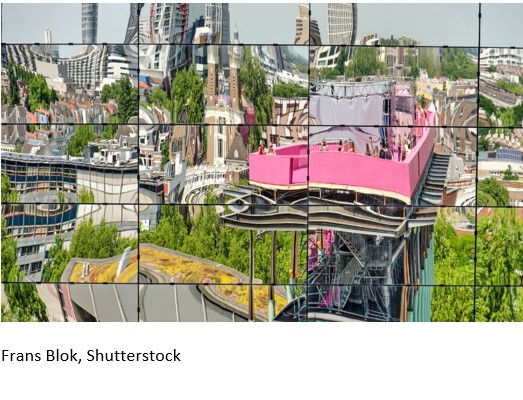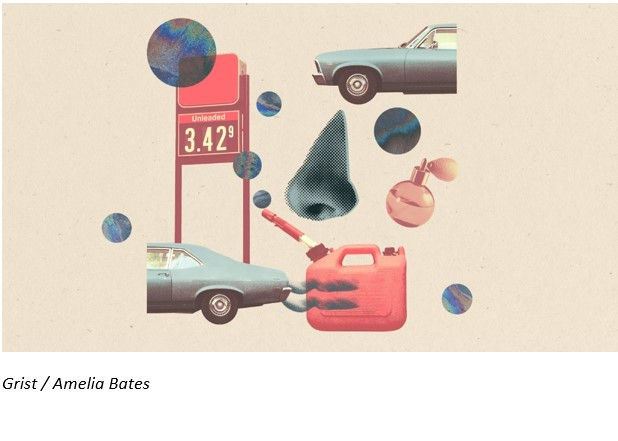Snippets for 1 September 2022
- CarbonEES
- Aug 31, 2022
- 5 min read

Welcome to another fortnightly edition of SnippETS.
We start off with a stark reminder that extreme weather events are here to stay, as we look at the first heat wave to receive a name: Zoe. With the naming, will come a familiarity with, and hopefully adaptation to, these extreme events, as we start planning for a new age: The Fire Age. But we have tools to battle the heat and in Rotterdam they are using green roofs to combat the heat island effect and bring nature back to the city.
Another tool available to us to combat climate change is nature-friendly farming - and it doesn’t have to come at the cost of productivity either. We can also use scientific developments in gene-editing technology to create crops that sequester much more carbon, meaning what space we do use for farming is more effectively used. The options available to us don’t stop there, as we look to vertical farms to assist in lowering the water demand of some crops, while utilising a much smaller footprint than a traditional farm.
To make effective change in the sustainability space, there may also have to be moves to prevent information promoting fossil fuels from being spread - a move that Sydney may be making as it considers whether to ban fossil fuel advertising. As for misinformation, that may be harder to spot, and we have an article that looks at 6 tips for spotting greenwashing that the eco-conscious consumer may find of value.
Stepping closer to home, we have a look at an ongoing battle between Auckland’s largest sand supplier and conservationists over the fate of Pakiri beach, just two hours north of Auckland.
Finally, we round off this week with an intriguing article about a perfumer tasked with creating a scent that would evoke the experience of being in an old gasoline-powered car - a nostalgic experience some may miss in the coming age of the EV.
Hurricanes and typhoons have long been given names and now, as a testament to our changing climate, we have Zoe, the first heat wave in history to be named. Heat waves are defined by the Spanish State Meteorological Agency (AEMET) as episodes of at least three consecutive days during which a minimum of 10 percent of weather stations record maximum temperatures above the 95th percentile. The July heat wave that sent temperatures soaring to nearly 45C in Seville easily qualified under these criteria. Read more....
With tens of thousands of people around the world having been evacuated this summer because of wildfires, communities need to start planning for the fire age. However, evacuation planning for wildfires is particularly tricky. Hurricanes always hit from the same direction, and can be monitored for days in advance as tropical storms. Earthquakes strike on faults, tsunamis on coasts. Wildfires, meanwhile, can spark all over the place, grow to any size, move in any direction and shift with startling speed. Read more....
One way of mitigating the impacts of heat waves is through the increased use of green roofs. Green rooftops can be an effective solution to urban heat islands, cities or specific neighbourhoods within an urban area that have become much warmer than their surroundings due to absorbing and re-emitting the sun’s heat. According to the US EPA, citywide ambient temperatures can be lowered by 3C with green roofs and building energy use can be decreased by up to 0.7%. They also filter GHG emissions from the air and increase biodiversity. Read more....
From more green spaces in cities, and the many benefits from diversity in these, we also find that diversity, and boosting biodiversity, in farming can give many benefits, without reducing average yields. Putting farmland aside for nature does not have a negative effect on food security, a recent study found. Even though productive areas were smaller, the increased wildlife improved food productivity and yield on the remaining land. This is expected to scale up too. Read more....
Food systems account for over one third of all GHG emissions, so there needs to be a strategy for changing how we grow, process, and distribute food. Genetic engineering of crops may have its uses, including new strategies to engineer crops to sequester more carbon. Some crops are already being modified to withstand droughts, floods, and diseases, and now we are looking to mitigate the problem of carbon itself. Scientists are trying to engineer plant roots to be sturdier, larger and deeper, and more resistant to decomposition. Read more....
Another way to improve food security is to grow local, and vertical farming can be one of the tools in this toolbox. Vertical production has benefits and downfalls, but getting the right crops in the right place will assist in increasing the world's food production by the expected 70% needed by 2050. This will need to be used alongside traditional farming and greenhouse production, but careful consideration of locations could see win/wins for this and other industries trying to remove heat or CO2 from their systems. Read more....
The fossil fuel industry’s greenwashing that is abetted by various marketing campaigns has delayed climate action and endangered human health. Sydney may be taking the first step in changing this - a first in the Asia Pacific region. The city’s deputy mayor has put forward a proposal where fossil fuel advertising would be subjected to the same restrictions as tobacco, gambling, and alcohol, citing their negative impact on public health. Read more....
Speaking of greenwashing, this article delves into some helpful ways to spot it happening. It’s key to be able to tell when a company is taking real strides to be sustainable or if it is simply spending money on marketing to promote them as “green”. There are 6 key areas where we as customers can train ourselves to better spot greenwashing. Read more....
This article’s focus is right here in New Zealand as it examines the fight to save Pakiri Beach, two hours north of Auckland. Since the 1940’s sand has been extracted from the seafloor as a key ingredient in the manufacture of concrete. The company removing the sand wants to renew its ‘right’ to harvest it for another 35 years. Local and environmental groups are saying enough is enough, as they battle against the company being granted further consents. Read more....
The smell of vehicle fuel has been with us a long time. As manufacturers look to invest more in electric vehicles, one thing will be missing: the good (according to some) old smell of gasoline. Ford commissioned the development of a fragrance, ‘Mach-Eau’, that invokes the smells of vehicles of old. The limited run has been surprisingly popular. Apparently for some, nothing beats the smell of old seats, oil, and gasoline to give an EV a bit of character! Read more....

This week we have two innovation articles we hope you find interesting:
Copyright of all featured articles lies with the original authors






























Comments